Greed and fear can have tremendous impacts on the market. The market goes up when more people are buying than selling. It goes down when more people are selling than buying. That seems obvious. What might not seem so obvious is the impact of the emotions behind those buying and selling decisions. Often, they can be summed up in two words: greed and fear. I’d like to make a case for the benefits of balancing greed and fear in your investment decisions.
The Risks of Greed and Fear
Greed, or what we might refer to as human desire, can help us achieve more because it can motivate us to strive for more. From a young age, we become conditioned to understand that hard work pays off in helping us achieve our goals and meet our needs.
Fear works the same way, but in reverse. Fear prevents us from running headlong into harmful situations. We learn to listen to the voice of caution in our subconscious.
But too much greed or too much fear can have a negative effect on our outcomes. Investing from a place of unbridled greed can lead to reckless buying decisions. Investing from a place of fear and panic can lead to costly selling decisions.
Investing is a bit like sports training: too much of a good thing can work against us. Overdoing it in the weight room can lead to injuries that ultimately degrade sports performance. Likewise, overreacting to greed or fear in the markets can degrade investment returns.
Of course, the goal with investing, as it is with sports, is to achieve the highest potential reward for any given level of risk. Ideally, we can control the risk. When participating in an “extreme” sport like skydiving, rock climbing or scuba diving, we control risks with the right equipment, proper training and including a competent buddy in the adventure. We double-check our equipment and document our plan for loved ones back at home.
With investing, we take similar steps to understand and mitigate risks. We create a long-range plan that accounts for known needs, goals, values, and the inevitable rainy day. We further control risk with a carefully conceived asset allocation plan to balance our investments in a way that will help us achieve investing goals.
One of the most important ways to avoid injury from an extreme sport or investing is to avoid panic.
When things go wrong —- and they sometimes do — we need to work the problem, trusting our training and resources to lead us to the best solution. One of the most valuable resources anyone can have in times of investor uncertainty is a long-term asset allocation plan that balances goals with risk tolerance.
A well-known and widely followed investor sentiment study conducted annually by the Dalbar organization consistently concludes that poor market timing leads to lower returns. Why? Emotions.
- In the period from January 1984 through December 2002, the S&P 500 was up 12.22 percent per year, while the average mutual fund investor was up only 2.57 percent during those same years.
- In the 10-year period ending December 31, 2015, the S&P 500 averaged a compound annual return of 7.31 percent, while the typical investor earned an average annual return of just 4.23 percent. That’s a whopping difference of 3.08 percent per year!
- By 2019, the news for individual investors was even worse, with Dalbar concluding a gain of just 3.88 percent over 20 years. Once you account for annual inflation of 2.17 percent during the period, that figure drops to a real average annual return for individual investors of only 1.71 percent. Here’s the math:
3.88% average annual return – 2.17% average annual inflation = 1.71% return
Dalbar concludes that individual investors without a solid long-term plan for asset allocation can make poorly timed buy or sell decisions based on greed when stocks are on the rise and based on fear when they’re dropping. Ultimately, those investors bought high and sold low in their attempts to time the market. Dalbar consistently shows how disastrous that approach can be.
Good decisions require good information, not emotion. When the indicator light on the panel says an engine is on fire, is the engine on fire, or is the light faulty?
When it comes to investing, it can feel tempting to react to what the media reports. But doing that is likely to lead to the bleak returns that Dalbar reports. The irony is that by reacting in fear of things that might not necessarily be dangerous, such as a temporary drop in portfolio values, we can increase our long-term risk due to bad emotional decision-making.
The reverse is also true. Reacting in greed to the latest hype can cause us to buy when or what we shouldn’t.
The Greatest Risk in Investing
Do you know the greatest risk most investors face today? It’s outliving their money. Allowing emotional reaction to control investment planning is no way to ensure that you will have the money you need and want as you age.
So how can you plan to avoid the pitfalls of emotional investment decisions?
- Have an asset allocation plan that includes cash or fixed-income holdings for emergencies. In this way, you will not have to sell long-term investments at an inopportune time.
- Think about your risk tolerance and the amount of volatility you can handle with longer-term investments.
- Don’t give in to fear or hype.
- Work with your trusted advisors to develop, monitor, and update a comprehensive plan designed to help meet your goals and values.
I have worked in the financial services industry for more than 34 years. I’ve seen every kind of market and every kind of reaction to it, from the overhyped to the outright panicked. I’ve seen firsthand that while investments, markets, products and technology all can change, the fundamental principles that drive good decisions do not.
I encourage you to avoid the hype of greed and the panic of fear. Balance those emotions with your focus on your long-term goals. Contact me personally or anyone on our team to talk about your investments and your long-term plan for financial independence. Helping your vision become reality is our top priority.
The information contained in this report does not purport to be a complete description of the securities, markets, or developments referred to in this material. The information has been obtained from sources considered to be reliable, but we do not guarantee that the foregoing material is accurate or complete. Any opinions are those of the author, and not necessarily those of Raymond James. Expressions of opinion are as of this date and are subject to change without notice. There is no guarantee that these statements, opinions or forecasts provided herein will prove to be correct. Investing involves risk and you may incur a profit or loss regardless of strategy selected, including asset allocation and diversification. Individual investor’s results will vary. Past performance does not guarantee future results.
The S&P 500 is an unmanaged index of 500 widely held stocks that is generally considered representative of the U.S. stock market. Keep in mind that individuals cannot invest directly in any index, and index performance does not include transaction costs or other fees, which will affect actual investment performance.

 June 2020
June 2020











